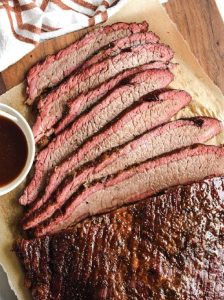Latham® dealer Mark Hawthorne backgrounds cattle near Lohrville in West Central Iowa. His family buys 400-pound steers in January and sells them around 800 to 900 pounds sometime between Labor Day and Thanksgiving.
“I had always planned to farm if there was an opportunity to do so,” says Mark, who worked for a farmer near Story City while attending Iowa State University. He continued working there for eight more years after graduation when an opportunity in corn breeding at the Syngenta plant in Glidden became available. Glidden was close enough to home that Mark also could help his dad farm.
Mark says he’d probably still be working in Glidden if Syngenta hadn’t closed the plant. He didn’t want to uproot his family to Seward, Nebraska, so he put his Ag Business major and Agronomy minor to use for himself by taking on a Latham® dealership and assuming more of the day-to-day responsibilities on the farm.
“Our farm has changed as times have changed,” Mark says. “We used to raise hogs in open-front buildings but got out of the business instead of reinvesting in new facilities. When packers started to buy large numbers of cattle, we switched to backgrounding cattle rather than raising cow-calf pairs. It works out well because we get to take a break from doing chores for a few months each year.”
Mark farms with his father, Merrill, and son Max. Max is finishing his freshman year at Iowa State University and looks forward to working with his family on the farm this summer. Once their corn and soybean crops have been planted, the family turns their attention to making hay.
Latham’s alfalfa products have always lived up to their description,” Mark says. “We were happy with the disease package and fine stems with fast regrowth, so we were hesitant to make a switch. Then we tried HarvXtra® technology and realized it’s worth the extra! It has a lot higher feed value, so we don’t need as many acres of alfalfa. For example, I used to mix one bale of alfalfa to one bale of grass hay. Now it’s a ratio of one bale alfalfa to three of grass — and it delivers the same feed value.”
The Hawthorne family has target dates to deliver their product to market. After all, time is money. Their cattle usually ship out in late fall, so the early winter months provide time for the family to enjoy a ski vacation or to visit family members and friends. Mark and Susan’s daughter, Jessi, lives nearby with her family. Their son, Kodi, lives in Sioux Falls, SD. The couple has five grandchildren.

“Our goal is to leave our farm in a position that allows our kids to come home if they so desire,” Mark says. “We’re getting the next generation ready now, so they can take over some day.”
One sure-fire way to get all the kids together is to serve brisket, says Susan, noting that “they all come running home” when they hear Mark’s Midnight Brisket is in the smoker. Here is the Hawthorne family’s favorite beef recipe.
Midnight Brisket

Ingredients
• 4- to 6-pound brisket
• Olive oil
• Worcestershire sauce
• Liquid smoke (optional)
• Salt and pepper
• 1 can beef broth
• Aluminum pie pan
• 12-ounce can of dark beer (optional)
• Aluminum foil
Directions
- Mix together salt, pepper, Worcestershire, and liquid smoke; rub liberally into all parts of brisket.
- Fill an aluminum pie pan half full of water and 2 Tablespoons of olive oil. Or replace this with the dark beer for a deeper flavor in the meat. Place this pan in lower part of your smoker to keep moisture while smoking.
- Start smoking at 180 degrees between 10 p.m. and midnight.
- You may have to add more water or beer in pan in the morning.
- Let smoke for 12 to 14 hours until meat reaches 180 degrees.
- Take brisket and wrap in foil with beef broth, return to smoker and increase temperature to 200 degrees; smoke for 2-4 more hours or until meat reaches 190-195 degree internal temp.
